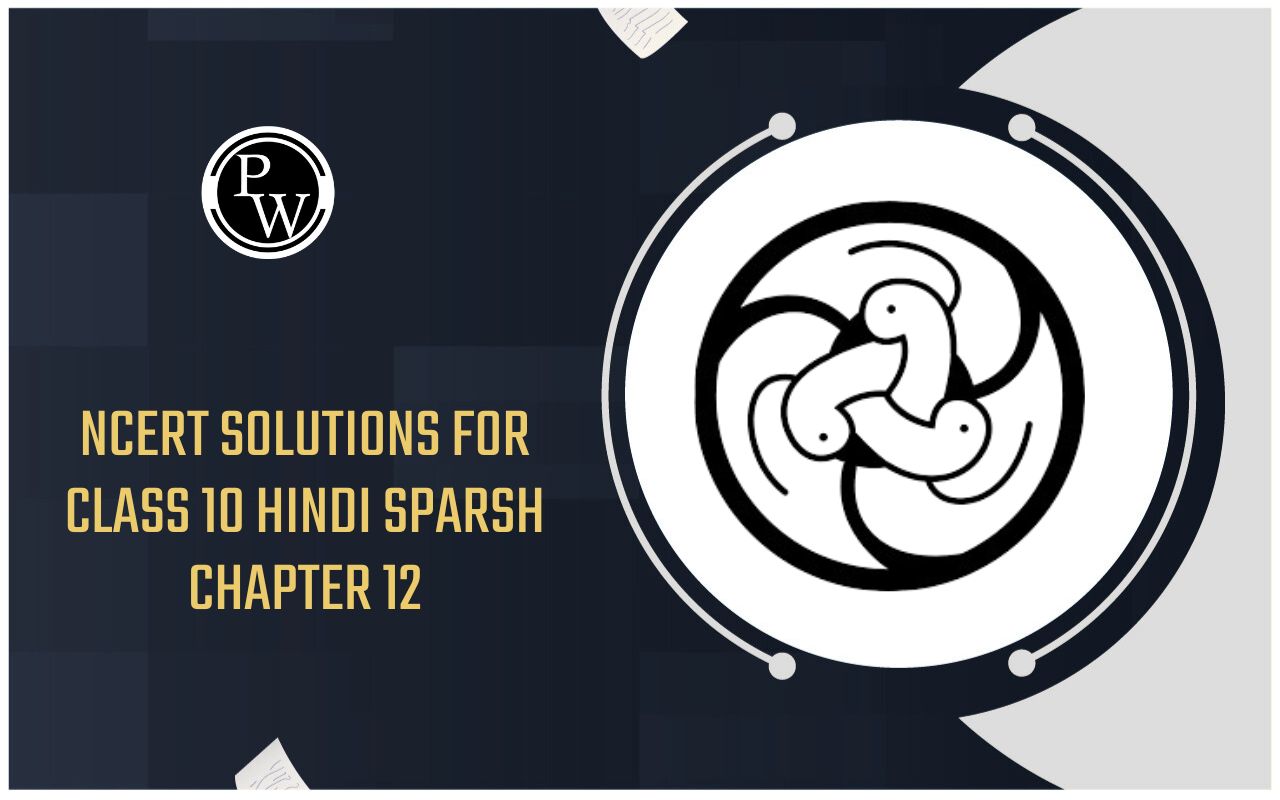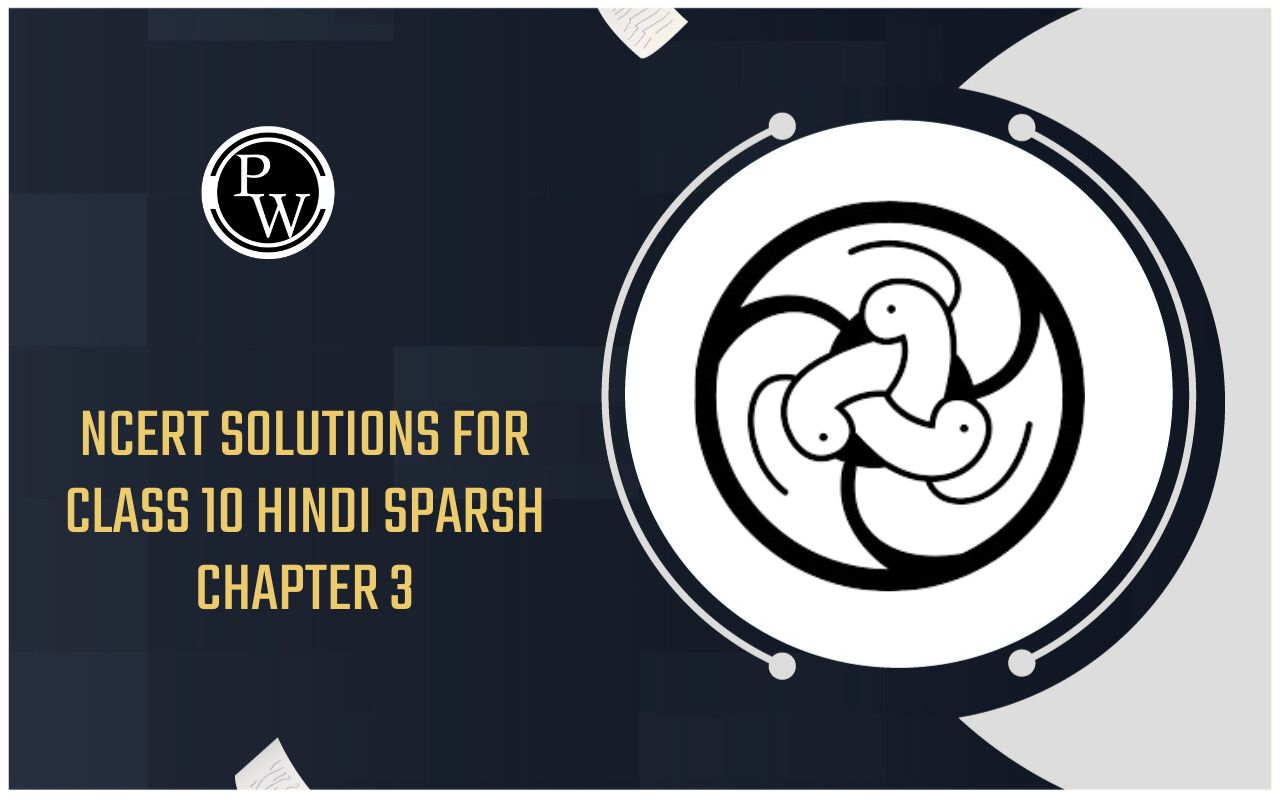
NCERT Solutions for Class 10 English Footprints without Feet Chapter 7: The most comprehensive and in-depth NCERT Solutions for Class 10 English Footprints Without Feet Chapter 7, which consists of the writing lesson "The Necklace," are provided by us. Class 10 students can access outstanding solutions by using our panel of subject-matter experts to curate the NCERT Solutions.
The NCERT Solutions for Class 10 English Footprints without Feet Chapter 7 are written in straightforward English to assist students in fully comprehending this unit and preparing themselves to answer the various exam questions with the utmost energy and confidence. The NCERT Solutions for Class 10 English Footprints without Feet Chapter 7 can be downloaded in PDF format by students via the link provided below.NCERT Solutions for Class 10 English Footprints without Feet Chapter 7 Overview
This is the tale of attractive young Matilda Loisel, who was raised in a low-income household. Monsieur Loisel, a petty clerk in the Board of Education office, was her husband. Matilda and her spouse were invited to a lavish celebration once. She spent four hundred francs on a gorgeous frock, but she didn't have any matching jewelry. Thus, Mme Loisel asked her friend Mme Forestier for a necklace. She was happy with her elegant and stunning appearance at the gathering. She gave a lively dancing performance at the ball. But when she got home, she realized the diamond necklace was gone. She replaced Mme. Forestier's necklace with a comparable diamond necklace that she and her husband purchased for thirty-six thousand francs. They put in a lot of labor for ten years to pay back the loan they took out to acquire the necklace. When Matilda ran into Mme. Forestier one lovely day, she informed her about her necklace disappearing and how it was replaced. Mme Forestier was shocked to hear this and said that Matilda had borrowed fake jewelry from her that was not worth more than five hundred francs.NCERT Solutions for Class 10 English Footprints without Feet Chapter 7 PDF
Here we have provided NCERT Solutions for Class 10 English Footprints without Feet Chapter 7 pdf for the ease of students, using this pdf students can easily access these solutions without the internet. These solutions will help students prepare better for their exams.NCERT Solutions for Class 10 English Footprints without Feet Chapter 7 PDF
NCERT Solutions for Class 10 English Footprints without Feet Chapter 7
Question 1:
What kind of a person is Mme Loisel — why is she always unhappy?
Answer:
Mme Loisel was a young, attractive woman who lived a straightforward but miserable existence. Despite coming from a low-income background, she had a constant desire for luxury and wealth. She was never happy since she knew her dreams would never come true. She was aware that her limited resources couldn't support her ostentatious ambitions, which only served to exacerbate her illness and make her sad.Question 2:
What kind of a person is her husband?
Answer:
Monsieur Loisel, Matilda's spouse, was an average, unassuming young guy. Although he worked as a lowly clerk at the Board of Education office, he was happy with his position. He excitedly carried a dinner invitation to his wife's lavish celebration. Despite his poverty, he was a devoted husband because he offered his beloved wife 400 francs so she could purchase a lovely attire for the celebration.Read and Find Out (Page 41)
Question 1:
What fresh problem now disturbs Mme Loisel?
Answer:
A new difficulty troubled Mme Loisel after she had spent four hundred francs on a lovely garment. She groaned at the thought that her lovely outfit was missing the perfect diamond. When her spouse heard this, he proposed that she wear some natural flowers as jewelry, but she declined, saying that there was nothing more degrading than looking shoddy among wealthy women.Question 2:
How is the problem solved?
Answer:
Monsieur Loisel, Mme Loisel's husband, first proposed that she wear some real flowers as jewelry, but she declined. He then counseled her to ask her wealthy friend, Mme Forestier, for a loan of some jewels. Matilda let out a happy cry, liking this brilliant concept. She went to her friend's house the following day and chose an exquisite diamond necklace to go with her exquisite outfit. Therefore, her difficulty was resolved by her husband's prompt suggestion.Read and Find Out (Page 42)
Question 1:
What do M. and Mme Loisel do next?
Answer:
Upon discovering that the necklace was missing, the Loisels searched everywhere for the missing jewel, but they were unable to find it. In the unlikely event that it had fallen into the street by accident, Monsieur Loisel even walked back to the streets they had used to get home. After failing to locate the jewelry, he went to the police and taxi agencies and placed a newspaper ad giving a prize to anyone who found it. Soon after, he instructed his wife to inform Mme Forestier, her friend, in a letter that the necklace's clasp had broken and that she would return it after it was fixed. They would have more time to locate the necklace as a result. But all of their hard work was in vain. They eventually purchased a new diamond necklace to replace the one they had lost.Question 2:
How do they replace the necklace?
Answer:
Following the failure of all their attempts, M. and Mme. Loisel decided to purchase a new necklace to replace the missing one. Except for eighteen thousand francs that he had inherited, M. Loisel borrowed the remaining sum from lenders and usurers under pretenses. The couple went to the shop and paid thirty-six thousand francs for a new necklace, which they later gave back to Mme Forestier, the rightful owner after they had borrowed enough money.Think about it (Page 46)
Question 1:
The course of the Loisels’ life changed due to the necklace. Comment.
Answer:
The necklace caused a significant change in the Loisels' lives. They needed ten years to pay back the loan they took out to purchase the necklace. Everything changed for them, and their life took an unexpected turn. They moved, fired the maid, and rented a few upstairs rooms to pay off the loan. Matilda negotiated with the butcher and grocer to save every last sou for basic survival, cleaned the soiled linen, and completed all the menial tasks in the kitchen. To pay off their debt, her spouse worked till late at night and took on odd jobs. To support themselves and pay off the terrifying debt accrued for purchasing the jewel, the couple lived a wretched life.Question 2:
What was the cause of Matilda’s ruin? How could she have avoided it?
Answer:
The primary factor that ultimately led to Matilda's downfall was her materialistic ambitions and discontent. She always felt bad about her financial situation and wished she had been born into a world of luxury and wealth. Accepting her current circumstances and finding contentment in her modest existence with her devoted spouse would have been an easy way for her to avoid destruction.Question 3:
What would have happened to Matilda if she had confessed to her friend that she had lost her necklace?
Answer:
Had Matilda bravely told her friend Mme Forestier that the necklace had been lost, she might have been able to prevent her demise. Her companion would have been upset about the loss for sure, but at least she would have learned that the jewelry was a fake, only costing five hundred francs. She would not have borrowed eighteen thousand francs to purchase a replacement for the lost jewelry and used her husband's whole inheritance if she had understood the necklace's true value beforehand. In addition, she had the option to spare her and her spouse from ten long years of agony, destitution, crippling poverty, and all the difficulties they had while trying to pay off the horrifying debt.Question 4:
If you were caught in a situation like this, how would you have dealt with it?
Answer:
Should I have found myself in the same circumstance, I would have made every effort to avoid succumbing to greed and impractical hopes. If I had misplaced a friend's necklace, I would have been prepared to accept responsibility for my actions and come clean about the loss. If I had been truthful about it, I would have undoubtedly cleared my path.Talk about it (Page 46)
Question 1:
The characters in this story speak in English. Do you think this is their language? What clues are there in the story about the language its characters must be speaking?
Answer:
Even though the story's characters speak English, it was most likely not their native tongue. The narrative was originally written in French by author Guy De Maupassant and then translated into English. Numerous cues throughout the book relate to the characters' French heritage, including the greetings that come before their surnames, such as "Monsieur and Mme Loisel," "Mme Forestier," and the minister's name, "George Ramponneau." Additionally, there are terms like "Franc" and "Sou" that are used to symbolize money. The store was situated between "Palais Royal" and "Champs Elysees," which further emphasizes the characters' French ancestry.Question 2:
Honesty is the best policy.
Answer:
The best policy is indeed honesty. We are all aware that pride and hypocrisy might first appear to be quite gratifying and appealing. However, someone who chooses the untruth route is probably going to live a life filled with pain, sorrow, and complete despair. Conversely, an honest person may have hardships in life at first, but in the end, they will receive all the enjoyment they deserve. Consequently, the best path to permanent happiness, contentment, and harmony in life is honesty.Question 3:
We should be content with what life gives us.
Answer:
Yes, we need to be happy and at peace with what life has to offer. Every person on the planet is unique from birth, and the entirety of their life is shrouded in mystery. Some people are born into a life of luxury, wealth, and notoriety. However, some people struggle to survive because they are born into extreme poverty and misery. Thus, the well-known proverb "Cut your coat according to your cloth" was created. This implies that one must learn to be content with what they have and live within their means. Individuals can strive to become financially better off by using honorable methods, and in the end, they can be content with the peaceful way they lead their lives.Benefits of NCERT Solutions for Class 10 English Footprints without Feet Chapter 7
Without question, the greatest approach to getting ready for your examinations is to study the textbook cover to cover. However, you also need to make sure that you have the right answers to the questions that are posed after every chapter. You would have a fantastic opportunity to make an impression with the NCERT Solutions for Class 10 English Chapter The Necklace. Here are some strategies to help you do well on your Class 10 English exam preparation. It makes sense that not all students should be of the same caliber. The Ch 7 English Class 10 Footprints Without Feet solutions have been written with this reality in mind. Additionally, a student of any level can readily understand these chapters because they are student-centric. Therefore, you can now score highly without any problems if you use these solutions.|
NCERT Solutions for Class 10 English Footprints without Feet Chapter Wise List |
| Chapter 1 - A Triumph of Surgery |
| Chapter 2 - The Thief's Story |
| Chapter 3 - The Midnight Visitor |
| Chapter 4 - A Question of Trust |
| Chapter 5 - Footprints without Feet |
| Chapter 6 - The Making of a Scientist |
| Chapter 7 - The Necklace |
| Chapter 8 - The Hack Driver |
| Chapter 9 - Bholi |
| Chapter 10 - The Book that Saved the Earth |
NCERT Solutions for Class 10 English Footprints without Feet Chapter 7 FAQs
How does Matilda replace the necklace?
What was the solution to the necklace?
Why did Matilda borrowed the necklace?










